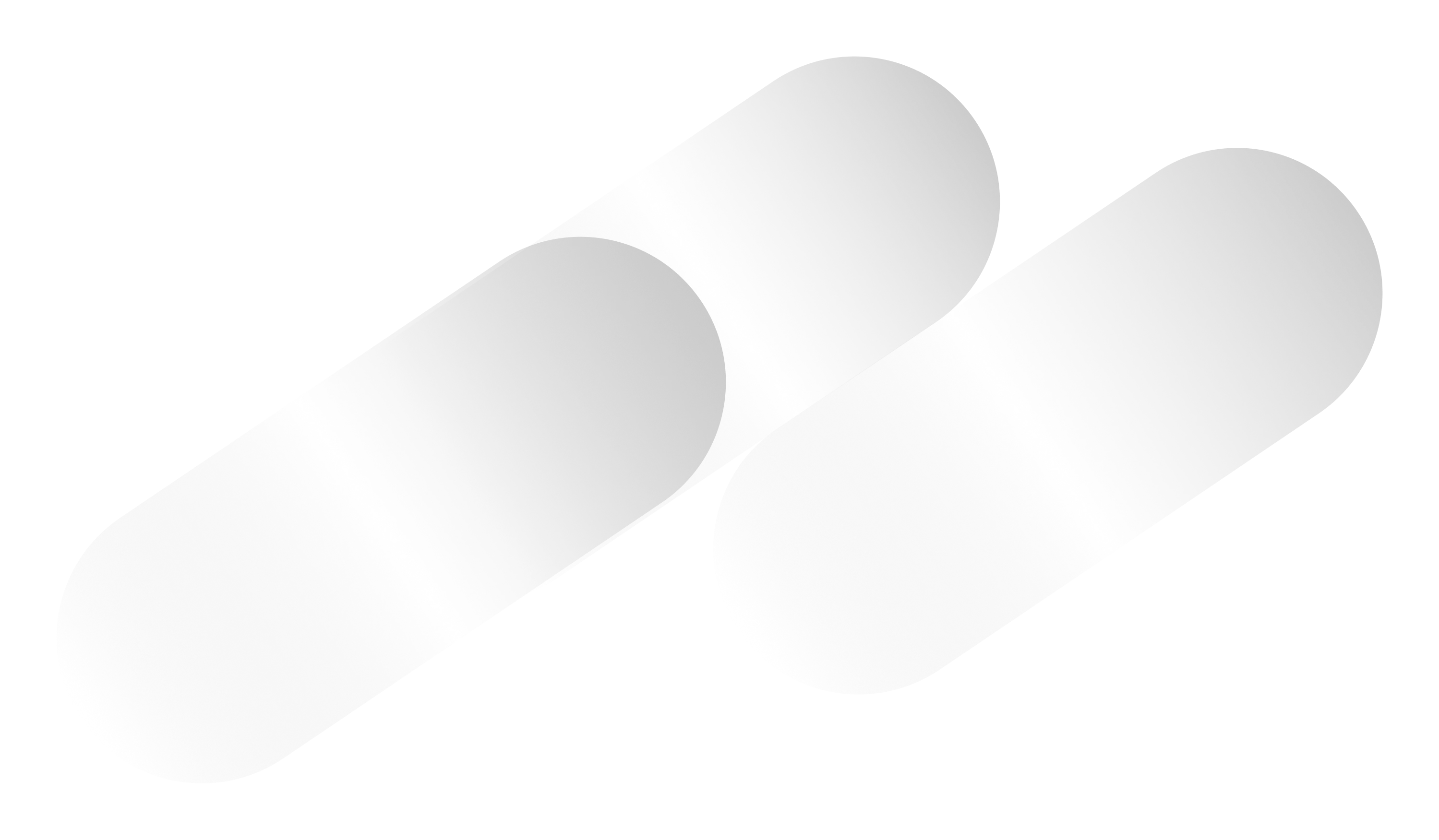The possibility of using the Humikal soil conditioner came first into mind during the fall of 2022, after I have researched the market availabilites and prices for fertilisers. Complex fertilizers were available at a net price of 400-500 thousand HUF/tonne. In addition, I would have had to add microelements, which would have increased my costs...
The great advantage of fertilizers is that they dissolve quickly and well, so this had to be examined first for the Humikal soil conditioner product. I conducted a solubility test in a glass, during which I observed that the water quickly turned black and the product dissolved with minimal sediment formation.
The plantation where we tested the product is an abundantly productive plantation in Érd, planted in 2015 with a 5*3 spacing. The goal at the time of planting was 20 kg per tree, envisioning a plantation that is easy to harvest and can also be harvested by mechanical shaking. At the end of March 2023, 550 kg of Humikal was applied by hand spreading at the tree's drip line, followed by incorporation with a side tiller the next day. The plantation consists of 44 rows, 24 rows were treated, and 20 rows remained as an untreated control area. After the spreading, watering was not necessary as nature took care of it; there was good and abundant rainfall in April and May.
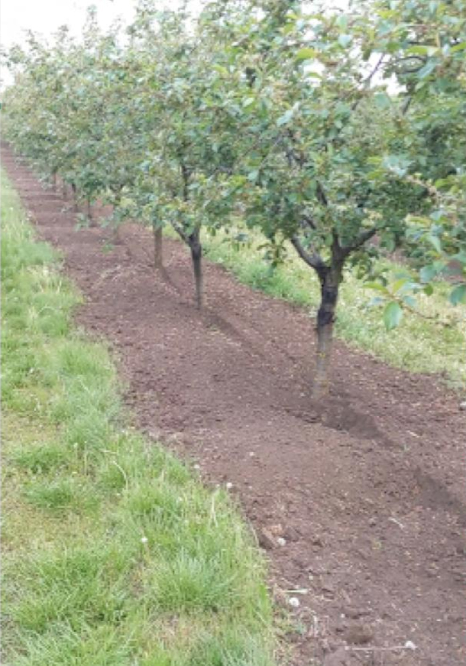
After last year's drought, during which the region received no more than 400 mm of rainfall, this amount was reached in the first 8 months of 2023. Irrigation was only necessary directly before and a month after the harvest. The plantation did not show any signs of drought or dryness this year. The fruit-setting period has always been a critical point in orchards in recent years, so after incorporating Humikal, bee colonies were used for pollination. Despite the cold weather around the flowering period, the fruit set relatively well, and frost damage was mitigated with frost protection agents, resulting in a 20-30% loss. After fertilization, I estimated a yield of 10-15 kg per tree, considering the pre-harvest drop characteristic of sour cherries. Even after the stress around flowering, the trees showed no signs of nutrient deficiency, and there was no evidence of micro- and macronutrient deficiencies on the leaves. I supplemented the plant protection treatments with Humikal liquid foliar fertilizer, applying 5 liters per hectare on each occasion. After fruit setting, fungicides and insecticides were applied together three times. The most noticeable difference compared to previous years occurred in the second half of May: the 3-meter spacing between trees was already closed by the canopy in early May, and we didn't even dare to think that the 5-meter row spacing for the tractor and cultivation tools would also prove to be insufficient, as in some places the rows were touching due to the intensive shoot growth.
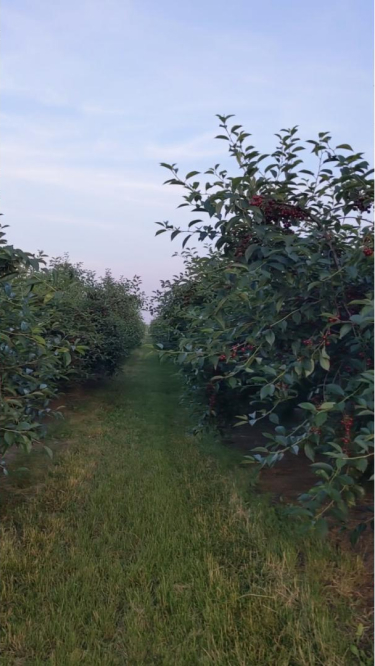

The area left as a control also grew well, but the shoot growth lagged behind compared to the treated area.
The pre-harvest fruit drop arrived as usual 2-3 weeks before harvest, and the cold symptoms indicated an additional 20-30% loss. The harvest time arrived, and from June 20, the fruit seemed ready for harvesting, but the usual industrial interest was lacking, so we prepared for manual picking.
What was surprising was that the fruit ripened uniformly this time, developing well, and there was no need for selective or two-phase harvesting during manual picking. The fruit remained in good condition for a long time, suitable for harvesting. Despite the signs of frost, the yield reached 20 kg per tree. The Érd abundant sour cherry has a good taste, excellent for fresh consumption and preserving in jars, but this year the taste turned out particularly well, which can be stated based on consumer feedback, as 30% of the yield was sold directly to consumers for fresh consumption, with continuous orders. The size of the cherries was 23-26 mm.
The cherry yields in the surroinding areas were 5-7 tons/ha, while our yield was 10 tonna/ha.

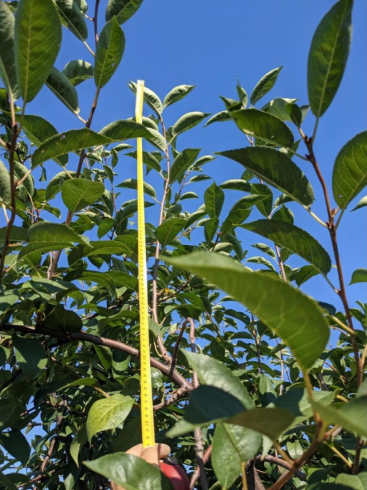
Following the harvest, the vitality of the plantation remained, with the previously observed shoot growths reaching 80 cm.
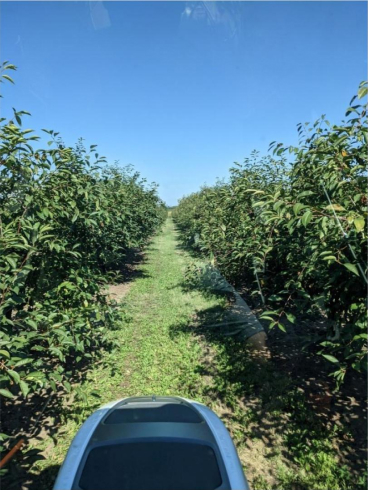
- Despite the 10 tons/ha yield, the foliage showed healthy signs
- No stress symptons
- During the final spraying on the 15th of August, leaf fall was minimal
